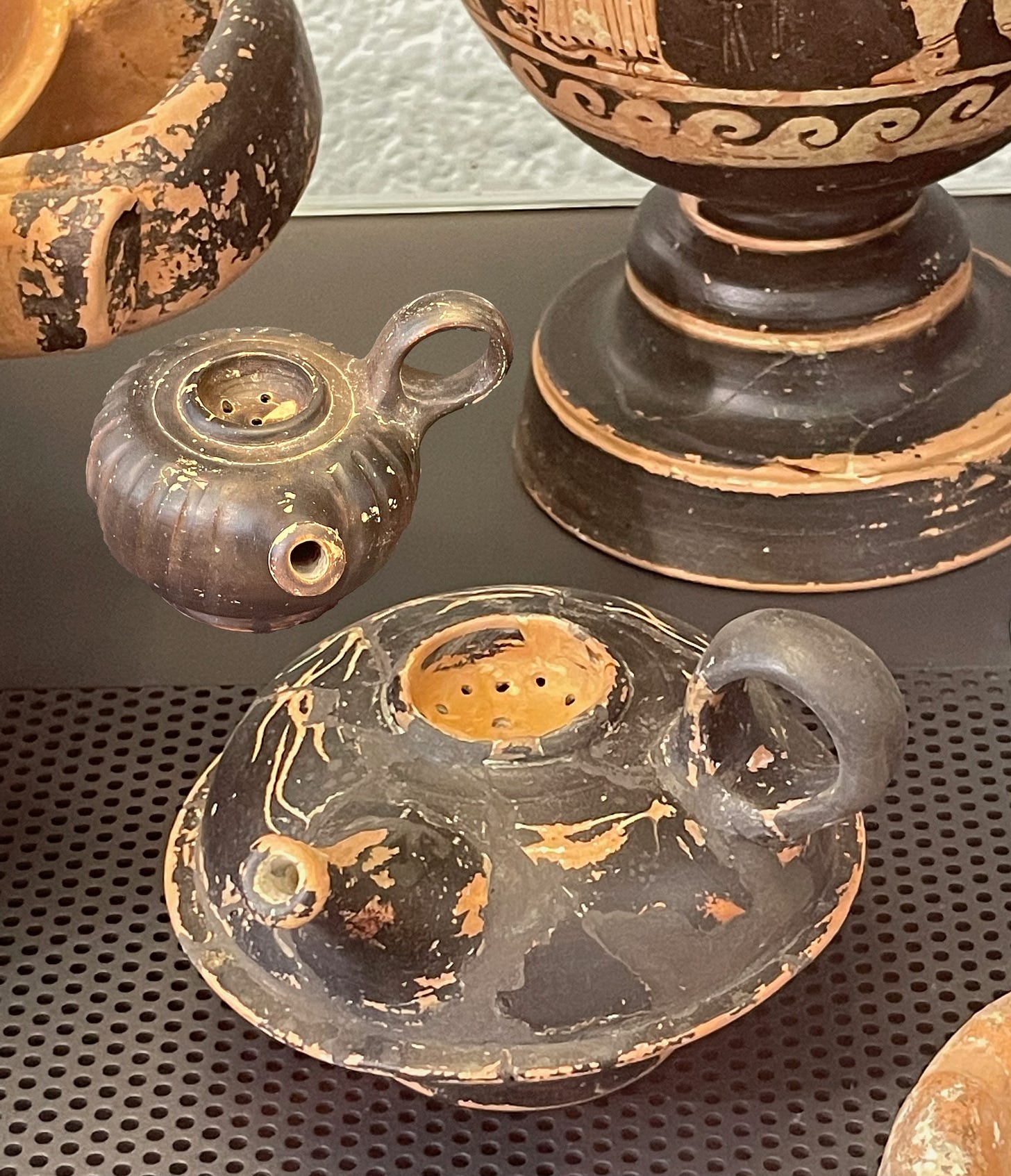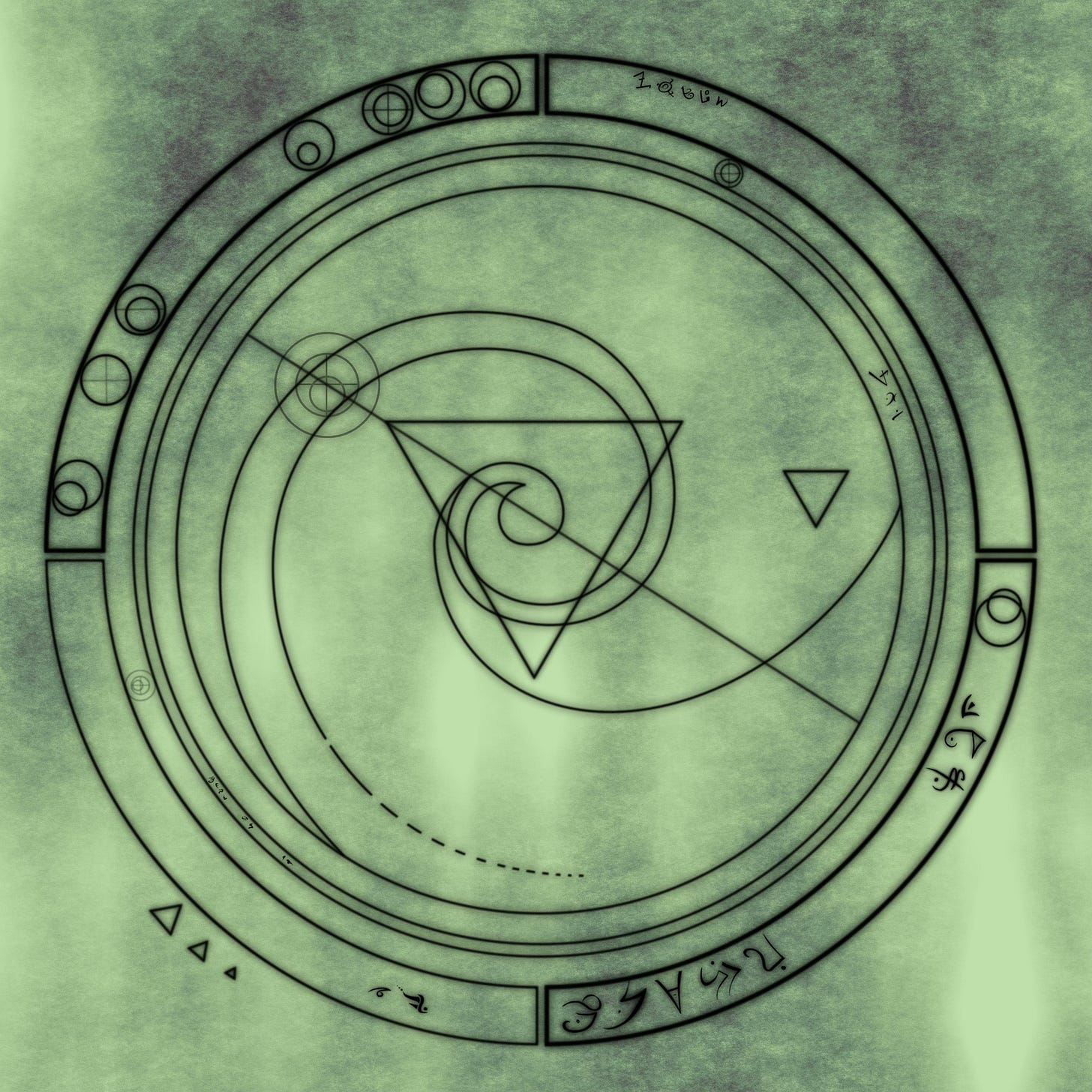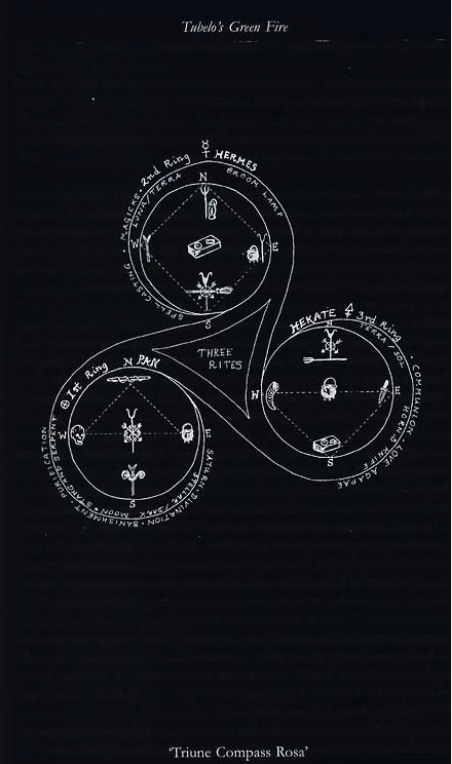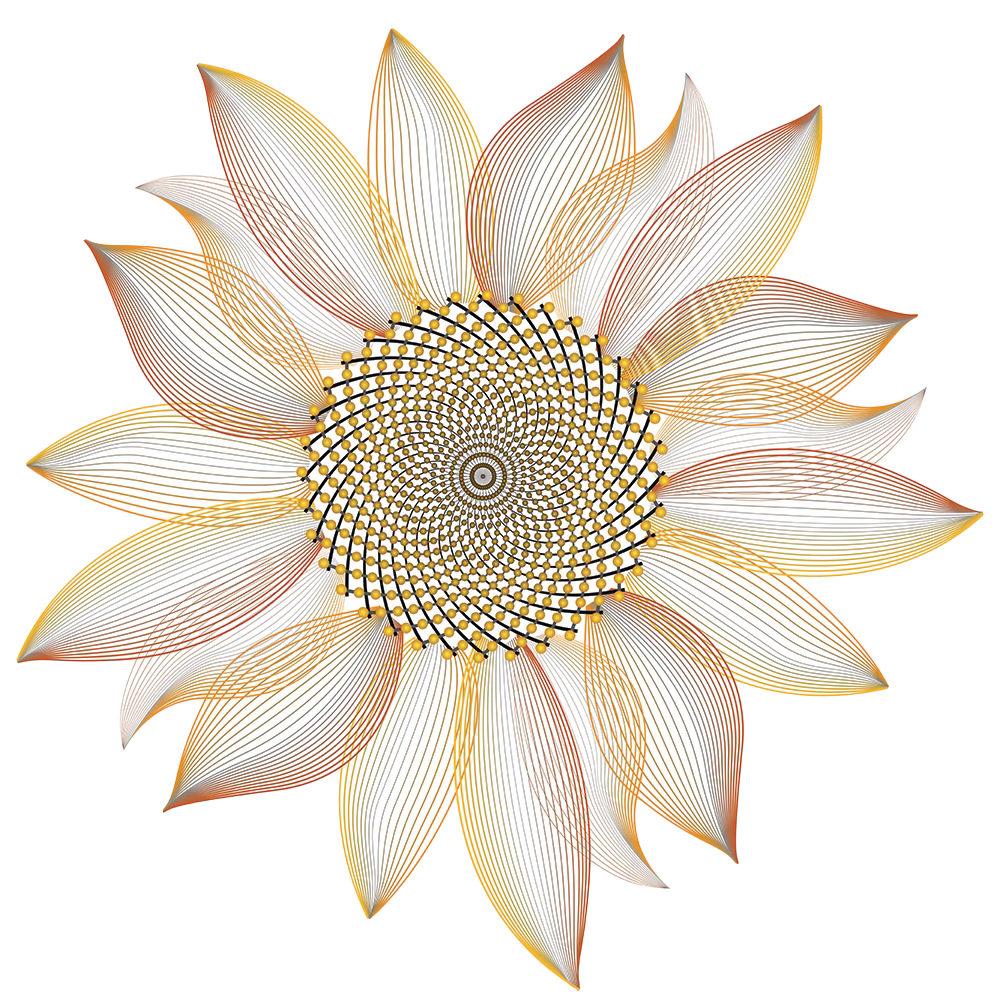Folk Medicine and Lineage Traditions
Lineage as a circular, multidimensional function of space and time
Western Herbalism
As herbal medicine has become increasingly mainstream here in the United States, it has also become increasingly commercialized. This is no surprise because our economic system is structured to generate profit and any businesses that emerge within this system have to profit in order to stay in business i.e. pay the bills, pay employees, pay for overhead, and so on.
At the same time as herbalism grows in the commercial market, more people are turning toward herbal remedies to address health concerns either as a complement to allopathic medicine or as a primary method of health care. This increases the need for trained community and clinical herbalists, subsequently raising questions about ethics and credentials.
In the United States at this time there is no standardized certification or licensure for herbalists. This is due to multiple reasons and has as many implications.
Both the fact that there is no certification for herbalists and that supplements and herbal remedies are largely unregulated in a mass market naturally leaves plenty of room for grifters and even well-meaning but inexperienced so-called “herbalists” to be out there making and recommending remedies that are at least ineffective and at worst potentially dangerous. Just a quick search on any social media platform will find you hundreds of posts about herbal medicine that have in no way been vetted for accuracy.
I am not talking about this to suggest or argue for licensure or further regulations. That also presents its own set of implications.
Standardization by an outside authority or regulatory organization is entirely antithetical to the tradition of herbalism that originated in folkloric cultures around the world and is still practiced by the majority of traditional cultures on Earth today.
When we impose regulations and certifications on traditional medicines it changes them from practices that are emergent and improvisational rising from within the social, communal, and cultural context. Folk medicine, including herbalism, is a naturally occurring phenomenon that is a core element of human community and has been since the beginning of time.
When an outside governing authority sets up standards and scopes of practice and then imposes them on folk practitioners it is no longer an emergent/coming from inside practice.
Traditional healers have always been accountable to the community they inhabit, not a state or national set of rules and protocols. Of course, we no longer have many intact insular village/neighborhood type social structures in existence.
The archetype of the village healer has changed and now our folk practitioners are operating in a global milieu on social media and zoom. Whereas in the past, word of mouth, social transparency, and interdependence self-regulated local practitioners, that is no longer the case in most instances.
And this is where the crux of the issue is; how to keep folk medicine actually folkloric within a global society that no longer supports those conditions?

What is Folkloric?
Folkloric, by definition, has been likened to “cultural DNA” that is both somatically (through example) and orally transmitted from one generation to another and includes beliefs, language, spirituality, symbols, objects such as art and tools, food ways, rituals, myths and healing among other things all formed via interdependence and a collective desire for survival.
Folk medicine is also inherently responsive to natural changes:
“If the natural context changes, the treatments and rituals also change. It cannot be otherwise: community and nature are two interconnected variables and as one (and the relationship with one) varies, the relationship with the other inevitably varies and medicine itself is transformed.”
~Micaela Balice, “Folk Medicine”
Centralized and standardized practices that aren’t capable of attunement to multiple variables that can occur in the natural context of local communities, especially in the case of a large nation like the United States, are not suited to regulate traditional medicine practices. The two systems are incompatible with one not even being a system (folk medicine) and the other being highly systemized for consistency and uniformity.
Folk medicine does not provide consistently repeatable results that can be analyzed and tested for accuracy and statistical significance given the limits of our current scientific method.
This is because these practices are in creative relationship with infinite variables that are present in any functioning ecological systems like a village or any other natural community. The methods of most cures can be very different from region to region and even village to village because the practitioner and the practice are in total presence with the emergent conditions both responding and speaking with them. It’s not scripted.
Imagine that you are meeting a friend for lunch, you may know the basics of how things will proceed; you’ll say hello, sit down, use a shared language to communicate. But everything else that happens will be improvisational based on what occurs between you.
Although there are basic similarities in the various practices of Italian folk medicine, each practitioner will do things a little differently and there are often contradictions about how to perform certain rituals and other treatments. Recipes, prayers, symbols, tools, and substances used such as plants, salt, oil, and so on will vary as well.
One example is with the many cures for the “malocchio” (evil eye). This is one of the most well known rituals in Italian folk medicine. Those afflicted with it will have symptoms that usually include a headache and general sense of malaise. Because it is usually contracted unintentionally, meaning the person that gave another the evil eye did so unconsciously, it is a common ailment.
Most Italian villages and neighborhoods once had at least one healer (some still do), if not several, that could remove it and they each usually had their own way. Especially in the Italian diasporic enclaves where you had immigrants from all over Italy living in the same place. Each healer would tell you their way is the right way though it may be different than the way it’s done over on the next block.
This is because each belongs to a different lineage that is carrying unique patterns and formulations that originate in different places and times, that have been transmitted through different ecological and social conditions and changed accordingly.

Lineage
Lineage: from Latin linea meaning literally a string, line or thread and also referring to “lines of descent”. These lines of descent are not necessarily genetic, though they can be, and nor are they necessarily straight, in fact they’re moving circles that rotate in oscillating wave forms like sine waves:
“A sine wave or sinusoidal wave is the most natural representation of how many things in nature change state. A sine wave shows how the amplitude of a variable changes with time.”
“Basic applied mathematics”, by Barry J Elliott on “Science Direct”
Sine waves are harmonic, self-organizing cycles and our lineage traditions are as well. They are a principle of sacred geometry and natural law in our space time that elucidates how states of expansion and contraction interplay and coordinate to form a pattern of creation through the dynamic equilibrium of cyclical energy that is a function of both position/space and time.
Examples of sine waves in nature include wind waves, sound waves, light waves, and radiation such as the heat that radiates from wood stove or gas oven.
In terms of physics:
“A sine wave, or sinusoid, is a mathematical curve that describes a smooth periodic oscillation. A sine wave is a continuous wave. It is named after the trigonometric function sine, of which it is the graph. It occurs often in both pure and applied mathematics, as well as physics, engineering, signal processing and many other fields.
Its most basic form as a function of time (t) is y(t) = Asin(2πft + φ) = Asin(ωt + φ)
A = amplitude, the peak deviation of the function from zero.
f = ordinary frequency, the number of oscillations (cycles) that occur each second of time.
ω = 2πf is the angular frequency, the rate of change of the function argument in units of radians per second
φ = phase, specifies (in radians) where in its cycle the oscillation is at t = 0.”1
The above Video: Traces cosine and sine functions from the unit circle using a single vector. The cosine value is a horizontal distance on the circle and a vertical distance on the wave. A 45 degree line graphically shows the exact translation from horizontal to vertical. If using complex math, the vertical is the imaginary axis and the horizontal is the real axis. Also when using complex math, the counter-clockwise rotating vector indicates a single positive frequency resulting in two sinusoids simultaneously.2
Sine waves and lineage are self-regulating because to remain in the wave requires harmonic attunement.
You must move in cycles, you must be resilient to change, you must be creative (including the destruction/death/grief phase of the creation cycle) to move through physical space and time.
Blocks or disruptions in this pattern result in a build up and/or depletion of energy that will eventually become a crisis or natural disaster that ultimately releases and resolves the block in an effort to re-establish dynamic equilibrium.
“When the waves or frequencies in the universe cross each other, they are not like ships passing each other in the night. Every time they cross and exchange, they have ‘children’. This creates a continuous system of mutual influence. Each time that waves cross and touch, their wavelengths must be able to add up repeatedly if the wavelengths of their ‘children’ are to fit into the pattern of the wave nest without fighting it. If the continuous addition of the waves is recursive (able to repeat itself over and over again), this effectively means that the waves add and multiply at the same time. So, as the waves merge, they must fit into a symmetry (pattern) in which they do not cancel each other out. In order to interleave the maximum number of waves or nodes in a completely constructive interference, they must add and multiply in the ratio of the golden intersection. The result is an infinitely constructive interference “
-Dan Winter3
We see sine waves as a central element in sacred geometry:
Humans are cyclical beings and inextricably bound to a natural self-organizing system. Nature is self-organizing and really doesn’t require our interference but if we are to survive as a species we must learn to participate well.
The reason for these differences is partly just the nature of folk medicine but more importantly it is because folk medicine is a lineage tradition. The knowledge is passed down via lineages, often these lineages are familial or parochial in Italian folk medicine. Other cultures have different forms of lineage traditions that might be outside the family including many of the mystery traditions of the Mediterranean.
Lineage transmission of knowledge is implicitly what I like to call “rhizomatic”, meaning there is no central taproot but instead many lateral offshoots that are both connected to the matrix of the root system but also autonomous and unique. It is also fractal; an infinitely repeating, self-generating shape or form. In simple terms a fractal is a repeating pattern.
The “regulatory” compass of such traditions is evidential, based on how the student or apprentice performs, their rapport with the people they serve, and their reputation in the community. Such traditions also usually require initiations and rites of passage that require the adept to show their skill and capacity before they are allowed to progress into deeper levels of knowledge.
Lineage traditions are like threads or vines that wrap and weave through time and space and the generations, they are mycelial and chthonic, tentacular. Donna Haraway talks about “tentacular thinking” in her book “Staying With The Trouble”:
“...tentacle comes from the Latin tentaculum, meaning “feeler,” and tentare, meaning “to feel” and “to try”....The tentacular ones make attachments and detachments; they make cuts and knots; they make a difference; they weave paths and consequences but not determinisms; they are both open and knotted in some ways and not others….Tentacularity is about life lived along lines—and such a wealth of lines—not at points, not in spheres. “The inhabitants of the world, creatures of all kinds, human and non-human, are wayfarers”; generations are like “a series of inter- laced trails.”
Lineage traditions are tentacular and fractal in that they are lines that navigate this world of Kronos, the God of linear time, like a map or guidebook that can take you from place to place and that is carrying the knowledge of the eons. Generational knowledge such as this contains information threads about everything that has ever happened and provides us the materials, both sacred and rational, to participate in the creation of Earthly reality while remaining in tune with all of the forces of the universe, seen and unseen.
When we apply this lens to herbal medicine practices today we can begin to attune to the waves of time and space that have brought this tradition to where it is now. We can notice and feel the ways in which it is harmonized with the conditions we live in now and begin to generate creative adaptations to adjust this tradition to our current needs. Some of this will involve trial and error, creating a wave or vibration in our time now, and noticing how it tunes itself to the original instructions of our ancestors.
For a simple to understand and fun video on sine waves and cycles of the universe go HERE
https://mathematicalmysteries.org/sine-wave/
Attribution: By Ohgddfp - Own work, CC BY-SA 4.0, https://commons.wikimedia.org/w/index.php?curid=95619161












